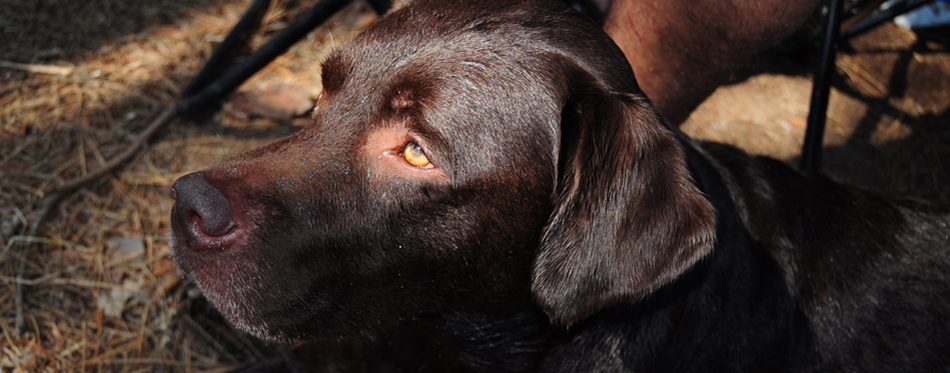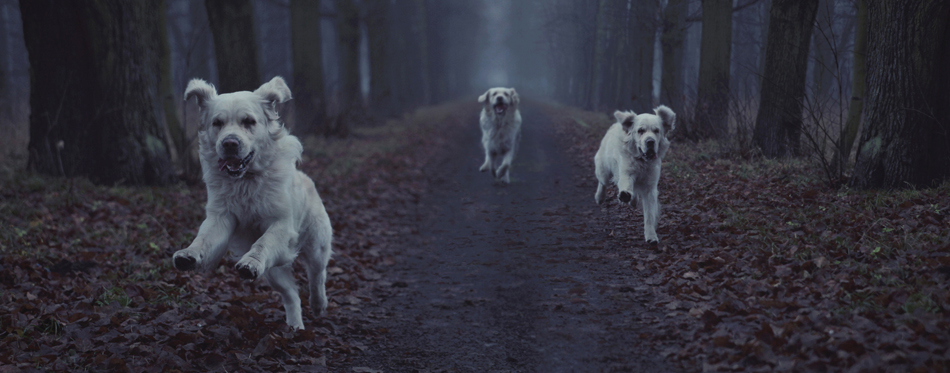Can dogs see in the dark? How well is their night vision? What about colors – are canines really colorblind? Pet parents are endlessly fascinated by the many abilities and talents their four-legged companions have. It’s no wonder why: humans are naturally curious about other species and how they see the world we all live in, especially how the “man’s best friend” sees it. While cats remain the most famous pet night owls with excellent night vision, dog owners will be pleased to hear that their canine companions are not far behind: they too have great night vision. As for how many colors or details dogs see… that’s a different story.
In this article, we talk about all things canine vision, including whether dogs can see colors, how well they see in the dark, and whether they can recognize as many details as humans can.

Do Dogs Have Night Vision?
Not only do dogs have night vision, but compared to humans, they can see pretty clearly at night. Granted, not as well as cats, but pretty good nonetheless. This is possible thanks to the anatomy of the canine eye: a large pupil and a retina with many light-sensitive cells, also known as rods. In fact, dogs have larger pupils and more rods than humans, which means they can see a lot better than we can at night.
That said, dogs are not as good as cats in very dark environments; instead, they see well in dim-light conditions. Why is that so? It all has to with that eye anatomy: a larger pupil lets in more light while more light-sensitive cells (rods) allow for better vision in dimmer lighting. Furthermore, the lens of a dog’s eye is closer to the retina than it is in the human eye, making the image they see brighter, and therefore more clear.
Additionally, all dogs have a secret weapon when it comes to seeing in dark, and the weapon is called tapetum lucidum. This is a reflective part of the canine eye, which sits right behind the retina, increasing the amount of light for night vision. Basically, tapetum lucidum, reflects light, giving your dog’s retina a second opportunity to register both light and the image itself. In case you were wondering why your dog’s (or cat’s) eyes glow in the dark, it’s thanks to tapetum lucidum, which literally reflects light outward, making your pet’s eyes glow eerily in that greenish-yellow light.
So, how well do dogs see in the dark? While there is no definitive answer to that question, what’s certain is that they see much better than we do. In fact, science tells us that it’s about five times better, however, this does depend on the breed and age of your pet.
Can Dogs See Color?
Many people believe that dogs are completely colorblind, i.e. that they have total color blindness. While it’s true that canines don’t see color the way humans do, they don’t see the world in black and white (this is called achromatopsia or total color blindness). Instead, dogs see a limited range of colors – yellows, blues, and grays. Why is this so?
Again, it’s all due to the anatomy of the canine eye. While dogs have more of one type of photoreceptors than we do – light-sensitive cells or rods – they have less of another type – cones. The cones are responsible for color perception and are what allows us, humans, to see a wide range of colors. We have three types of cones, whereas dogs have two. This means that their ability to perceive colors is limited, at least when compared to us. In essence, dogs do see the world in colors, but in fewer colors than we do.
So, if dogs see the world in mostly yellows and blues, what about the rest of the colors? The colors we perceive as red, green, orange, and so on, do not exist to our furry companions. That said, they do appear on their spectrum, but somewhere on their yellow-to-blue range. That violet, green, yellow, orange, and red rainbow you’re seeing? Your dog sees it in dark blue, gray, light yellow, dark yellow, and dark grey.
Take a look at our review of Dog Sunglasses and Goggles for more info.

Dog Vision is Different Than Human Vision
While dogs may see fewer colors than humans do, they have an advantage when it comes to the field of vision. Where we have about 190 degrees of field vision, dogs have about 250 degrees. This means they have the advantage of 60 degrees more peripheral vision, which is pretty significant.
Another difference between human and canine eye is in how we process the details in the images we see. While your eyes have foveas, which are small indentations in the retinas that allow us to take in vivid detail, canine eyes do not. This means that your dog is not able to see as many fine details as you can, however, it also means that their eyes are better at tracking motion than yours will ever be. So, for instance, while your pup may not be able to see all the colors and fine details on their favorite toy, you can bet they will be the first to see that squirrel running up a tree, even though it’s 60 feet away.
And finally, visual acuity is different in dogs than it is in humans. Where we have 20/20 vision, dogs have 20/75 vision. This means that our four-legged friends cannot see details and patterns as clearly as we can. A pattern that a dog can barely see at 20 feet is large enough for a human with normal vision to see at 75 feet. This is a pretty big difference, and one could say a pretty big disadvantage. However, just because your dog’s visual acuity is less than that of a normal person, doesn’t mean that their vision is poor. It does mean that dogs see the world in a softer, sort of a blurred focus though.
Sources:
- Can Dogs See in the Dark? – AKC
- Can Dogs See in the Dark? – PetMD

